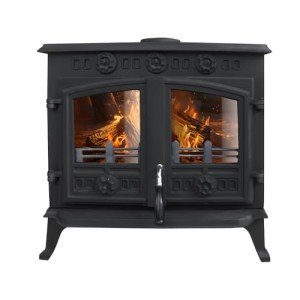Burning Wood on a Multi-Fuel Stove: The Complete Guide
Multi-fuel stoves are popular choices for house owners aiming to efficiently warm their areas. By allowing users to burn numerous kinds of fuel, consisting of wood, these stoves offer flexibility and convenience. This post talks about the advantages of burning wood on a multi-fuel stove, the very best practices for doing so, and answers frequently asked questions about their use.
Advantages of Burning Wood on a Multi-Fuel Stove
Burning wood on a multi-fuel stove offers a number of benefits:
- Cost-effective Heating: Wood is often more easily offered and cheaper than other fuels such as oil or electrical power. This can result in considerable cost savings on heating costs.
- Environmentally Friendly: Wood burning is generally more sustainable than nonrenewable fuel sources, particularly if the wood is sourced from regional or sustainably handled forests.
- Independence from Electricity: A multi-fuel stove can run without electrical power, making it a trustworthy alternative during power failures.
- Visual Appeal: Many homeowners appreciate the warmth and atmosphere created by a wood fire, including a cozy aspect to their home decor.
Choosing the Right Wood
Not all wood is developed equal when it pertains to burning in a multi-fuel stove. Here's a list of the very best kinds of wood for burning:
Best Types of Wood for Burning
- Hardwoods:
- Oak: Burns slowly and supplies a high heat output.
- Maple: Offers a hot, constant burn.
- Hickory: Known for its high heat and enjoyable aroma.
- Softwoods:
- Pine: Burns quickly and hot however produces more creosote, so less more suitable for routine usage.
- Spruce: Similar to pine, it fires up quickly.
Woods to Avoid
- Treated or Painted Wood: Releases hazardous chemicals when burned.
- Softwoods with High Resin Content: Can cause excessive creosote buildup in chimneys.
- Wet or Green Wood: Contains moisture that lowers heat output and increases smoke.
Best Practices for Burning Wood on a Multi-Fuel Stove
To guarantee ideal performance and efficiency when burning wood on a multi-fuel stove, follow these best practices:
- Season the Wood: Use skilled wood that has been dried for a minimum of six months. This reduces moisture material and enhances burning effectiveness.
- Prepare the Stove: Make sure the multi-fuel stove is tidy and correctly aerated before beginning a fire.
- Start With Kindling: Use dry kindling and small pieces of wood to get your fire started. Slowly add bigger pieces as the fire develops.
- Control Airflow: Most multi-fuel stoves have adjustable air controls. Handle air flow for efficient burning-- open it large when beginning the fire and slowly reduce as the fire gets going.
- Routine Maintenance: Have the stove and chimney checked regularly for creosote buildup and other issues to make sure safe operation.
- Store Wood Properly: Stack firewood off the ground and cover it to secure it from rain and snow, guaranteeing it dries appropriately.
A Typical Wood-Burning Process
- Select seasoned hardwood logs.
- Place crumpled newspaper and kindling in the stove.
- Light the newspaper and let the kindling catch fire.
- Add larger logs slowly to maintain the fire and make sure a consistent burn.
- Monitor the stove's temperature level and adjust air intake as needed.
Safety Tips
Burning wood can be relaxing and efficient, but security must constantly be a priority. Here are some essential safety ideas:
- Install Carbon Monoxide Detectors: Ensure your home has working detectors and change the batteries frequently.
- Use a Stove Thermometer: This assists monitor the temperature to avoid overheating.
- Keep Flammable Materials Away: Maintain a safe distance in between the stove and any flammable materials such as furniture or curtains.
- Have a Fire Extinguisher Nearby: Choosing a fire extinguisher ranked for both wood and flammable liquids adds an important security procedure.
FAQs
1. Can any type of wood be burned in a multi-fuel stove?
Not all wood appropriates for burning. Double Fronted Multi Fuel Stoves to utilize seasoned hardwoods for the best efficiency and efficiency. Prevent treated wood, damp wood, and softwoods with high resin content.
2. How frequently should Multi Burner clean my multi-fuel stove?
Routine cleaning is important for safety and efficiency. It's usually recommended to clean your stove and chimney once a year, or more often if you burn a great deal of wood.
3. What is the best way to save firewood?
Fire wood needs to be saved in a dry, well-ventilated location off the ground. Cover it with a tarpaulin to secure it from rain while allowing air flow.
4. How do I prevent creosote buildup in my chimney?
To prevent creosote accumulation, constantly utilize experienced wood, preserve correct air flow, and have your chimney checked and cleaned regularly.
5. Is using a multi-fuel stove safe for indoor use?
Yes, multi-fuel stoves are created for indoor usage. Nevertheless, appropriate setup, regular maintenance, and appropriate ventilation are essential for safe operation.
Burning wood in a multi-fuel stove can be an exceptional choice for effective and sustainable heating. It enables property owners to tap into renewable resource sources while enjoying the standard heat and aesthetics of wood fire. By choosing the best wood and adhering to best practices, one can ensure a safe, efficient, and pleasurable heating experience throughout the chillier months.

